With each passing year, the ghosts of Iowa State baseball are slowly slipping away. As Iowa State University’s oldest varsity sport, baseball has always been imbued with the very fabric of summer. Warm languid breezes carrying the burnt embers of grilled meat. Peanut shells crunching underfoot and the rattle of Cracker Jack boxes. The glint of chain link dancing in the dying evening light. Sadly, Iowa State baseball was discontinued a dozen years ago in 2001 due to budget difficulties. During the shiny optimism of the 1950s, it would’ve seemed inconceivable that such a fate would befall the Cyclone team. The strongest echoes are from 56 years ago this week, when the Iowa State team–fresh off of their Big Seven title–was within a game of the national championship.
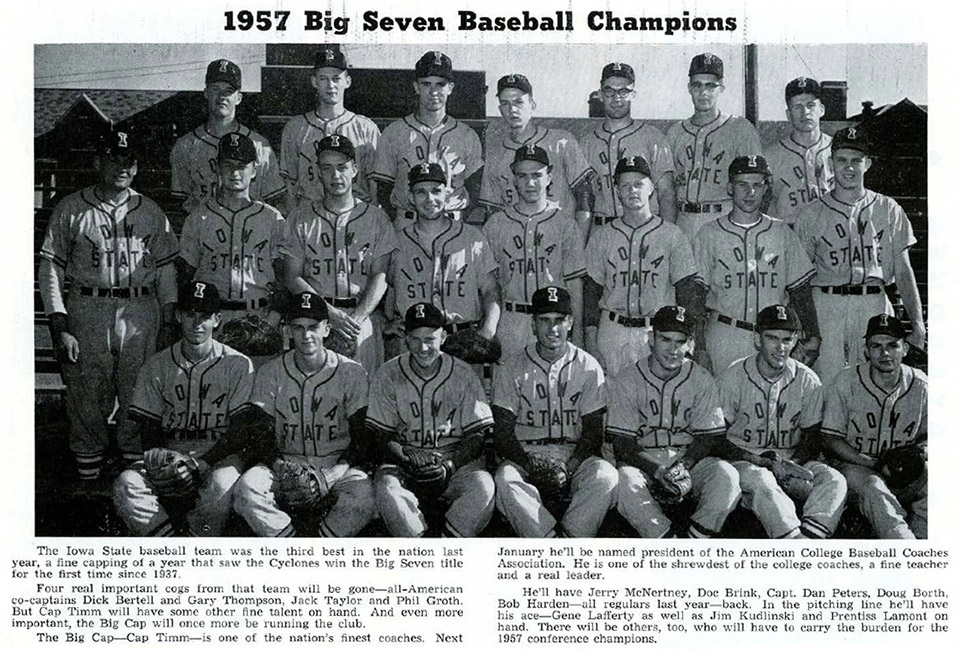
Propelled by the roaring economy during the 1950s, many notable milestones occurred in American history. In the orange groves of Anaheim, Walt Disney opened Disneyland in 1955. One year later, President Dwight D. Eisenhower signed the Interstate Highway Act. Sputnik was launched on October 4, 1957 igniting the space arms race. Nearly two weeks later in theaters, a young Memphis man named Elvis Presley enthralled millions of teenage girls in Jailhouse Rock. The United States responded to Sputnik with Explorer I in January 1958. Later that year in September, The Blob launched the career of Steve McQueen. The baby boom peaked in 1957 as no end to the good times could be seen.
During the era, Major League Baseball was led by such stars as Ted Williams, Hank Aaron, and Stan Musial. After the 1957 season, the Brooklyn Dodgers and New York Giants franchises moved westward. Traditionally an afterthought, college baseball started dramatically gaining in popularity after World War II ended. The first two College World Series took place in Kalamazoo, Michigan in 1947 and 1948. The tournament moved to Wichita, Kansas for one year before settling in Omaha’s Rosenblatt Stadium (then known as Municipal Stadium) for the 1950 series. This picture of Municipal Stadium from a 1957 minor league game shows how modest the setting was compared to later years (via the Omaha World-Herald Archives):
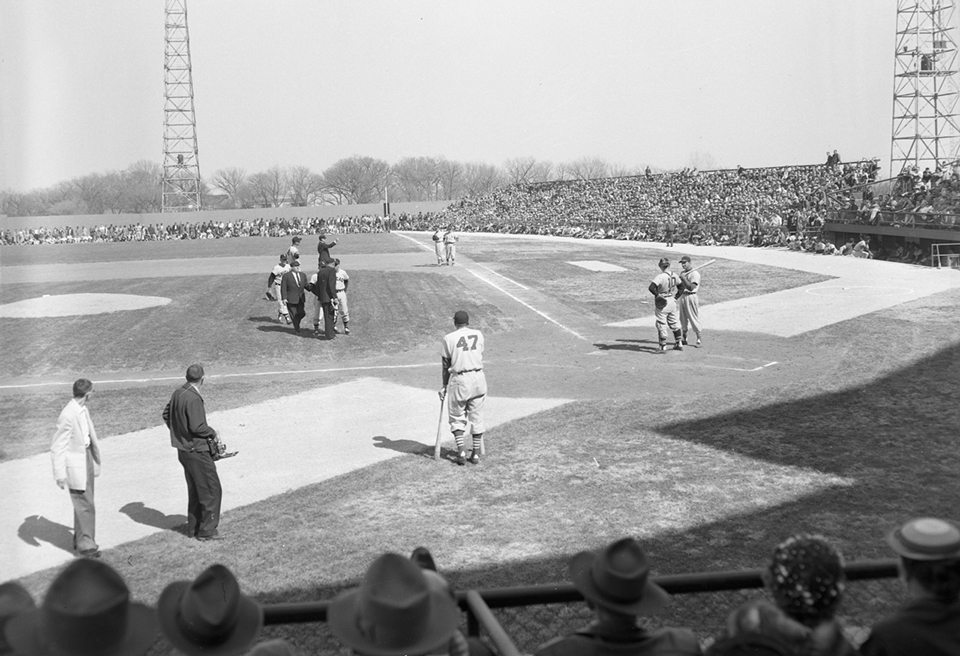
Iowa State University’s beloved Cy the Cardinal was born in 1954. The same year, Harold Nichols became the Cyclone wrestling coach–eventually winning six national titles and finishing runner-up eleven times. Just three years later, in the midst of a January winter, Don Medsker’s buzzer beater set off pandemonium in the Armory. Down went Wilt Chamberlain and top-ranked Kansas 39 – 37. Following the basketball season, star guard Gary Thompson was named a first team All-American and invited to be on The Ed Sullivan Show in New York along with the rest of the All-Americans–including Wilt Chamberlain. Just two weeks later, Kansas would lose in triple overtime to the University of North Carolina in the national championship game.
Helmed by widely respected skipper Leroy “Cap” Timm, the 1957 Cyclone baseball team had high hopes for the season. Playing their home games at a small field just northwest of the Armory, the Cyclone team swept through the Midwest to capture the Big Seven title en route to their first ever appearance in the College World Series. Better known for his basketball exploits, senior Gary Thompson hit .311 with four home runs and eighteen RBIs in 27 games. Also starting on the team: senior catcher Dick Bertell and junior infielder Jerry McNertney. Both would enjoy long major league careers.
In the first week of June, eight teams headed to Omaha to kick off the College World Series at Municipal Stadium. Iowa State beat Notre Dame in the opening salvo only to lose to California in the second game of the double elimination tournament. The third game against Connecticut was a strong Cyclone victory. The AP story wrote, “Pitcher Jim Kudlinski of Iowa State was the stingiest of all the pitchers, allowing only three hits as State eliminated Connecticut by a 5 to 2 score.” Only four teams remained now: California, Iowa State, Penn State, and Notre Dame.
The early semifinal pitted California against Iowa State in a rematch. Through five innings, the Cyclone team hung to a narrow 1 – 0 margin before the powerful Golden Bears offense exploded for an eight run rally in the sixth inning. The sparkling Cyclone careers of Gary Thompson and Dick Bertell came to an end in the 9 – 1 loss. Ultimately, the 1957 College World Series belonged to the California Golden Bears team who dispatched Penn State the next night to post a perfect tournament record and win their second World Series in school history–the first being 1947 in Kalamazoo. The Omaha World-Herald noted that this California team was “the best team to appear in the eight Omaha tournaments.”
Reporting on the series, the June 24, 1957 issue of Sports Illustrated named Dick Bertell and Gary Thompson to its All-American teams and wrote “the catching was exceptional, too, and some of the defensive work around shortstop was brilliant, particularly that of Iowa State’s little All-America basketball player Gary Thompson, who must have been raised on Frank Merriwell.” (Frank Merriwell was a fictional clean-cut hero of the 1930s and ’40s similar in spirit to the Hardy Boys.)
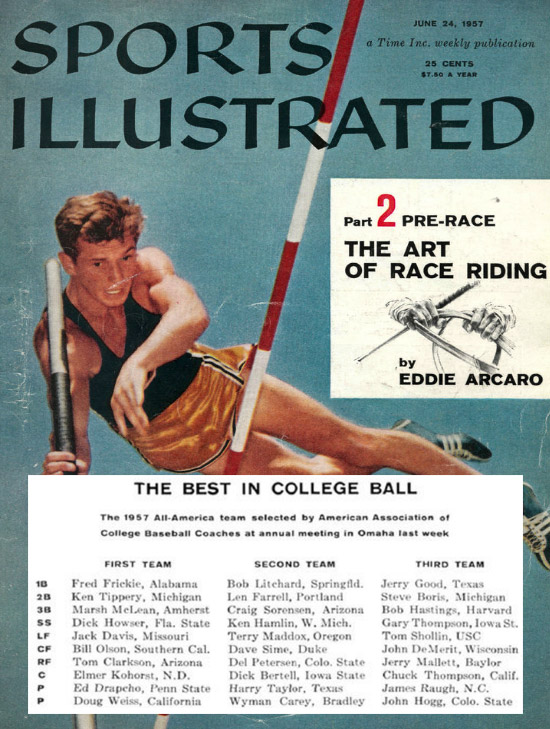
* * * * *
Gary Thompson went on to star with the legendary Phillips 66ers AAU amateur basketball team. The Minneapolis Lakers of the NBA also drafted Thompson. During that era, the stability offered by NIBL/AAU company teams was appealing as players could still play and also be an employee of the sponsoring company, thus offering an easy transition to post-sport life. During the AAU heyday, many players on the USA Olympic basketball teams from 1948 to 1964 were from AAU teams. After being named AAU All-American three times (’58, ’59, and ’62) and winning the 1962 NIBL championship, Thompson also became the head coach for four years following the 1962 championship.
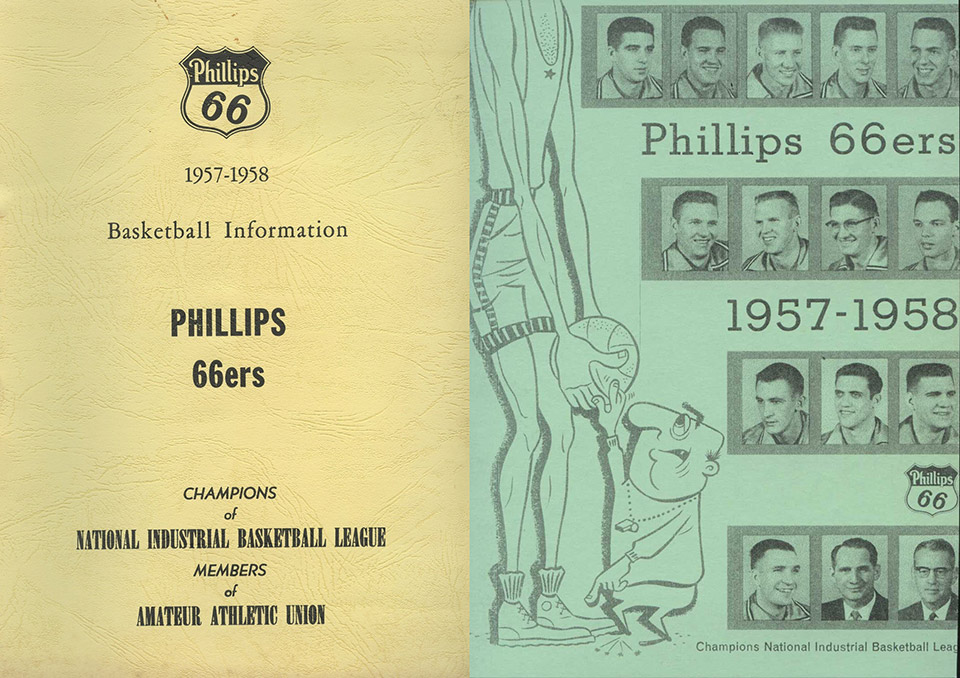
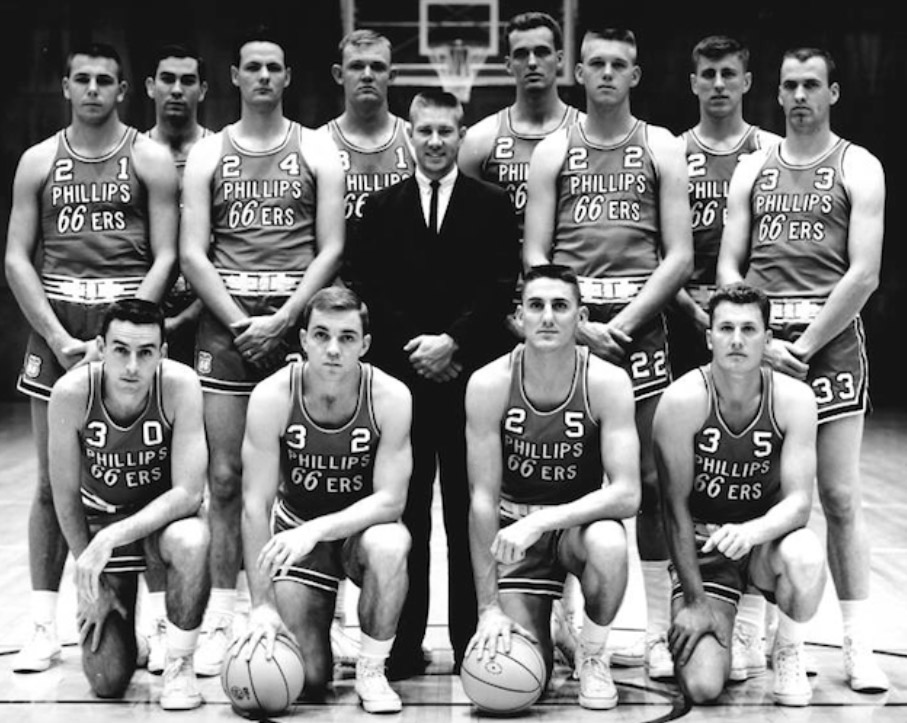
Dick Bertell played for the Chicago Cubs and briefly the San Francisco Giants. Bertell’s best season was the 1962 season where he hit .302 while serving in the military for half of the season. As part of a rotating committee of Cubs catchers, Bertell was known for his cannon arm: his caught stealing percentage of 47.7% is fourth all-time just behind Yogi Berra and ahead of Ivan Rodriguez.
Jerry McNertney’s senior year in 1958 saw ISU stumble to a 8 – 15 season, but McNertney signed with the Chicago White Sox organization and spent seven years in the minors–converting to catcher along the way–before breaking through in 1964. In 1969, McNertney posted many career bests while playing for the Seattle Pilots–the franchise moved after just one season to Milwaukee and became the Brewers.
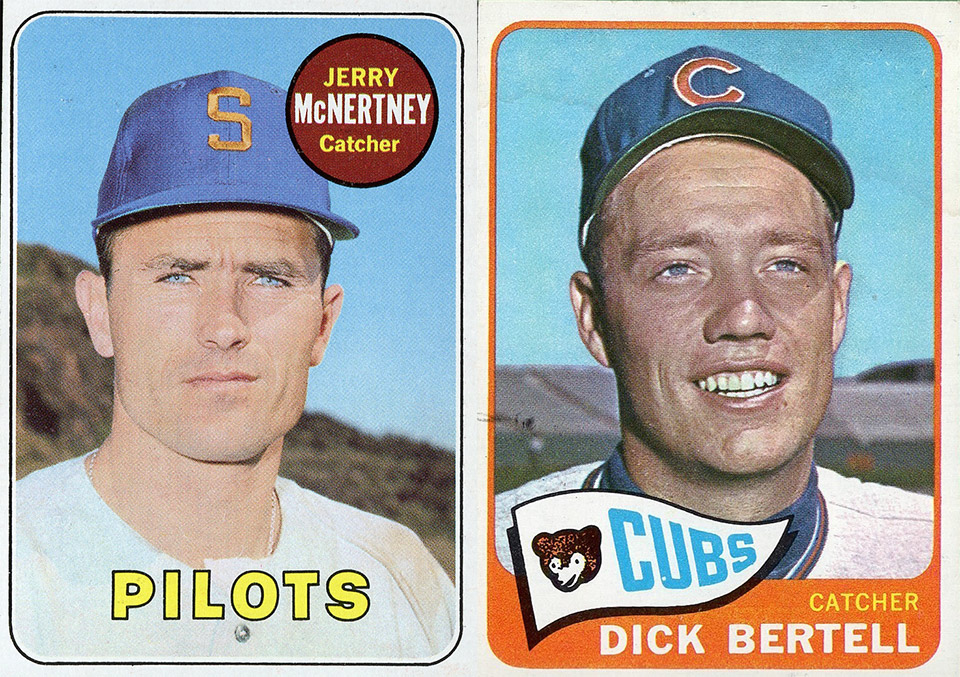
Coach Timm returned to the College World Series in 1970 and eventually retired in 1974. An interesting note: Cap Timm was asked to be Mike Michalske’s presenter when he was elected to the Pro Football Hall of Fame in 1964. Michalske was an all-pro guard during multiple championship seasons with Curly Lambeau’s Packers, but it was Timm who left an indelible impression on Michalske when he briefly coached Iowa State’s football team in the 1940s. Bertell remembered Coach Timm this way: “It is difficult for most people to be both a coach and a man. Throughout the time that I played for Cap, his overriding concern was with the young man himself and not the baseball ability.”
* * * * *
In 1958, partially propelled by the incredible success of the boys of summer ’57, the Iowa State baseball team debuted new uniforms that would endure for many years. Lovingly rendered in a classical cursive style, the script recalls those days of hot dogs, shelled peanuts and the Cyclone team hitting the horsehide around the diamond.
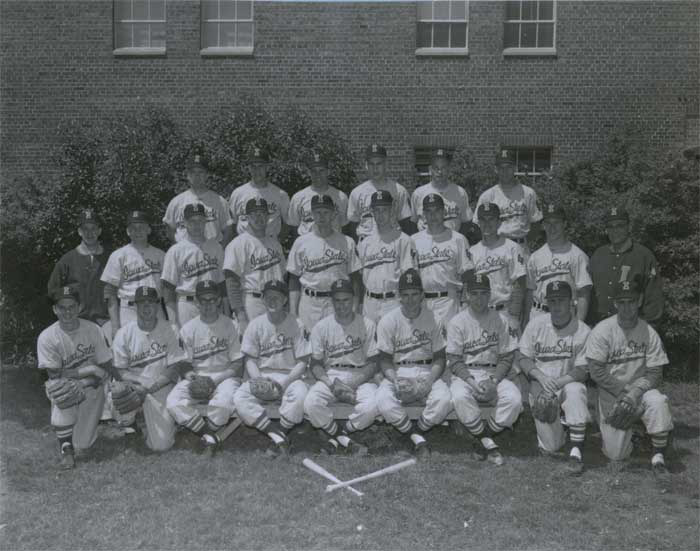
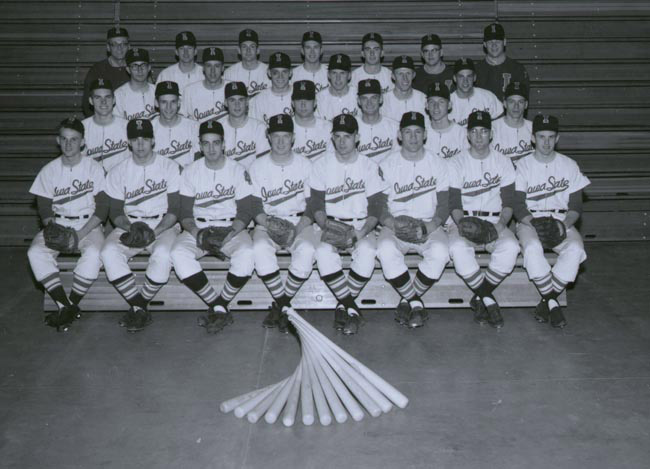
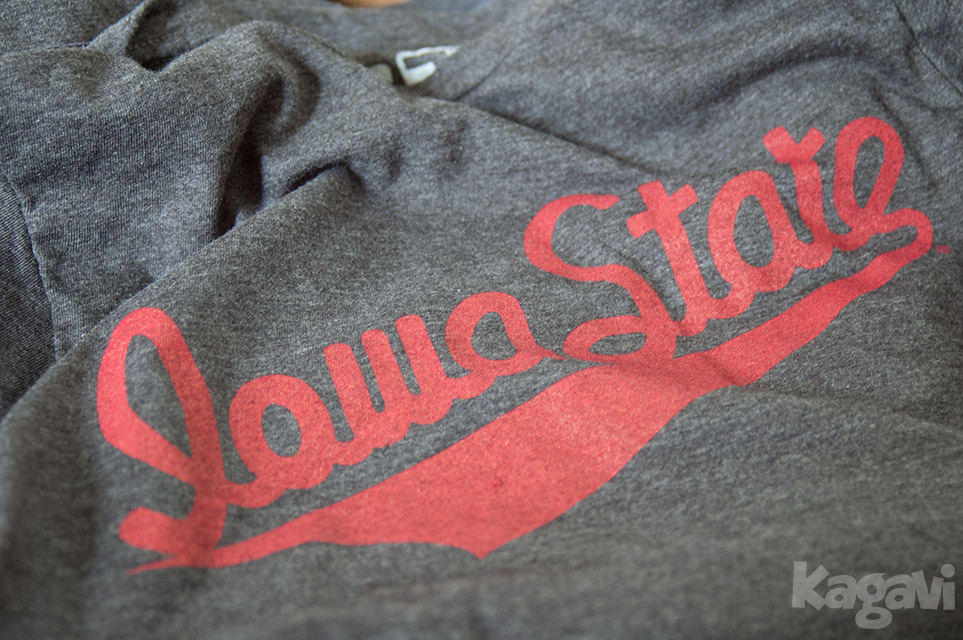
Only 50 limited edition shirts were made and there will be no more reprints.
